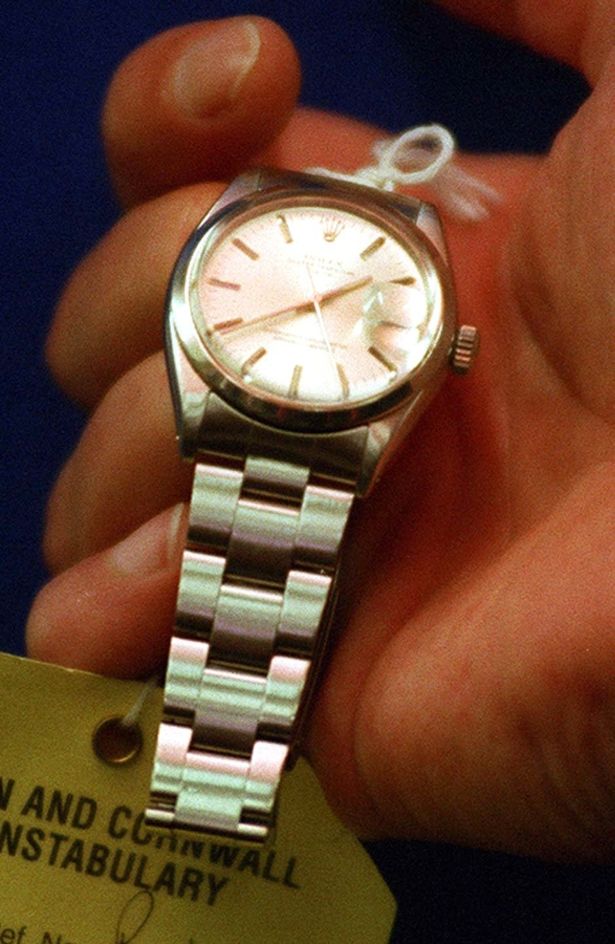Why You Might As Well Steal That Rolex Off Your Murder Victim

As a general rule, if you’re going to kill someone, you might as well steal his watch, especially if it’s a Rolex Oyster. They retail for north of $5,000 and even preowned ones can fetch two grand or more on eBay, so by leaving the watch behind, you’re costing yourself some money. Similarly, taking the watch may make the police figure that the murder was a burglary, obfuscating your real motives. And most importantly, you don’t know if your victim ever had it repaired.
Okay, maybe that isn’t the most important reason in most cases, but the murder of Ronald Joseph Platt isn’t most cases.
As of the early 1990s, Platt was a Canadian-born TV repairman living in England who yearned to return back to Canada. He couldn’t afford to do so, though, until he met an American expat named David Davies, which is a ridiculous name and probably should have been a clue. But it wasn’t, and when Davies befriended him and offered to help fund his return to North America, Platt agreed. Davies even helped him with the paperwork; Platt gave Davies his birth certificate, drivers license, and other key documents so that his new friend and benefactor could help him get home. Davies returned the documents, of course, but by then the damage was done. In 1992, Platt returned to Canada, likely forever, and Davies — using the documents Platt had provided — assumed his identity.
With the real Ronald Platt now living an ocean away, the fake Ronald Platt figured he was in the clear. A few years later, the real Platt ran out of money and decided to go back to England, assumedly to repair TVs again. Davies — who by now had firmly established himself as (the fake) Platt — had a problem: he simply couldn’t have a second Ronald Platt walking around the same town he was in, especially given that the other Platt was the real Platt. So, he did something worse — he killed Platt and dumped his body in the English Channel. GQ shares the details:
One summer day in 1996, [Davies] took Platt on his/their boat, The Lady Jane. [To be clear, it was Davie’s boat, but of course, he owned it in Platt’s name.] [Davies] knocked Platt unconscious, tied a 4.5-kg anchor to his belt, and tossed the body overboard. It was one hull of a perfect crime, hook, line, and sinker.
Two weeks later, a fisherman found the real Platt’s body. The police were ready to rule it a suicide, per GQ, and no one had reported Platt missing (perhaps because the Platt they knew — the fake Platt — was not actually missing). The identity of the dead man was likely to go unsolved due to lack of evidence: as Plymouth Live reported, “detectives found nothing on the body to indicate who the drowned man was. Their only clue was a 25-year-old Rolex Oyster watch which was still attached to his right wrist,” pictured above.
As it turns out, the Rolex was all the police needed to not only identify the deceased but also to unwind a massive international fraudster. Rolex, in the words of Plymouth Live, keeps “meticulous service records” about its watches. And in 1980 — more than fifteen years before he was murdered — Ronald Platt took his Rolex to a jeweler in his area for some tune-ups. After a six-week investigation, the police were able to determine the identity of the dead man.
The next step was to inform the next-of-kin, which was easy enough: all they had to do was look up Ronald Platt’s address in the phone book or whatever other records they had. That’s exactly what they did, but those records were out of date. A neighbor, however, suggested that authorities contact his best friend, David Davies, which they did. But when they arrived at Davies’ neighborhood, no one had heard of him. Rather, the person living at the given address had gone by the name of Ronald Platt.
This impossible coincidence set off all sorts of warning bells for investigators and the real story unraveled quickly. The man purporting to be Ronald Platt wasn’t Ronald Platt, but he wasn’t David Davies either. His true name was Albert Johnson Walker, a failed banker who, after his business collapsed, defrauded his customers out of more than $3 million in assets and skipped town. He had been living on the lam for more than five years, running money through Swiss bank accounts and other things that international fraudsters do. But by and large, he was a white-collar criminal, so when he killed the real Platt, Walker apparently didn’t think to also steal his watch.
As a result, Albert Johnson Walker is now serving a life sentence in prison. The whereabouts of the Rolex are unknown.
Bonus fact: The Rolex Oyster is generally believed to be the world’s first waterproof watch. When it came to market in 1926, Rolex wanted to drive that point home, so they created a custom in-store display for the Oyster: an aquarium. Jewelers would place the watch in the bowl and add some water and maybe a goldfish or two, proving to customers that the timepiece kept perfect time even while submerged.
From the Archives: Numbers Racket: When a sports jersey with the number 21 on it was worth a Rolex. And some other stories about valuable uniform numbers.
